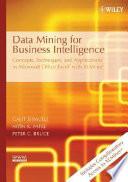
Data Mining
Agencies Have Taken Key Steps to Protect Privacy in Selected Efforts, But Significant Compliance Issues Remain
Data mining -- a technique for extracting knowledge from large volumes of data -- is being used increasingly by the gov't. & by the private sector. Many fed. data mining efforts involve the use of personal information, which can originate from gov't. sources as well as private sector organizations. The federal government's increased use of data mining since the terrorist attacks of Sept. 11, 2001, has raised public & congressional concerns. This report describes the characteristics of 5 federal data mining efforts & determines whether agencies are providing adequate privacy & security protection for the information systems used in the efforts & for individuals potentially affected by these data mining efforts. Includes recommendations. Charts & tables.
- ISBN 13 : 9781422302668
- ISBN 10 : 1422302660
- Judul : Data Mining
- Sub Judul : Agencies Have Taken Key Steps to Protect Privacy in Selected Efforts, But Significant Compliance Issues Remain
- Pengarang : Linda D. Koontz,
- Penerbit : DIANE Publishing
- Bahasa : en
- Tahun : 2005
- Halaman : 76
- Halaman : 76
- Google Book : https://play.google.com/store/books/details?id=YjcCAAAAIAAJ&source=gbs_api
-
Ketersediaan :
Data mining -- a technique for extracting knowledge from large volumes of data -- is being used increasingly by the gov't. & by the private sector.









